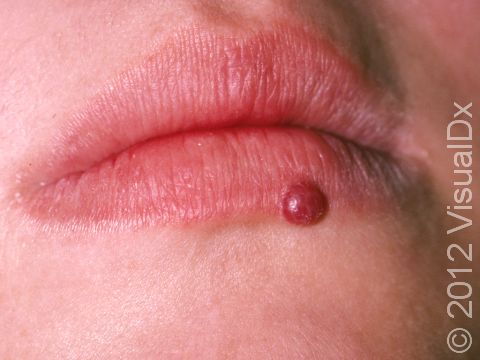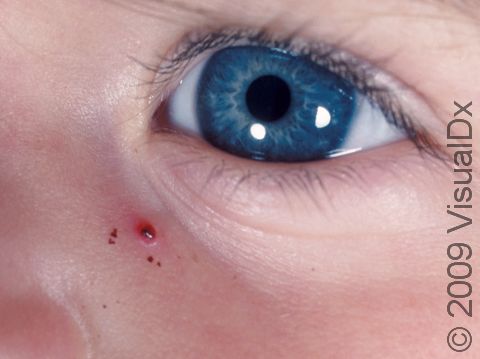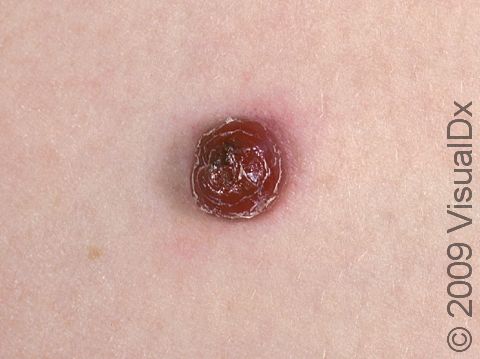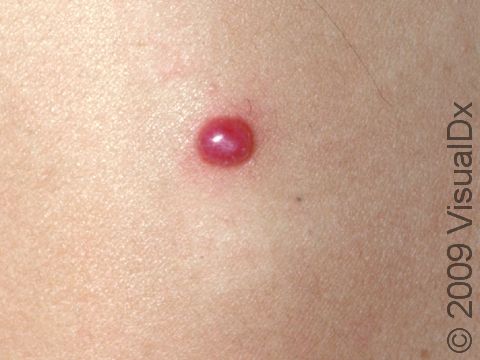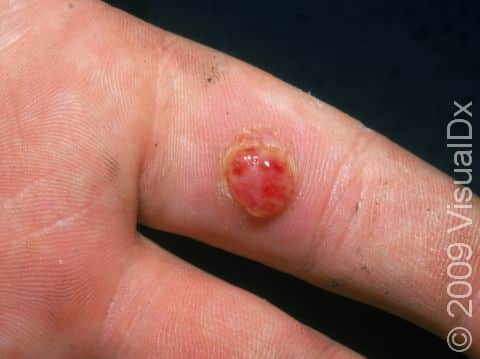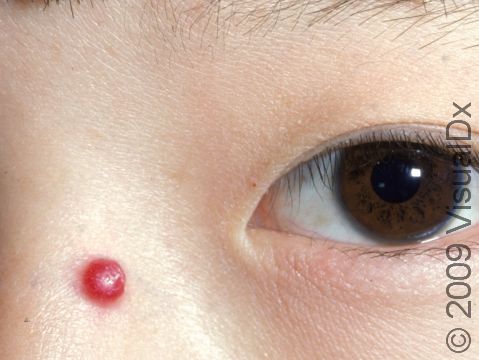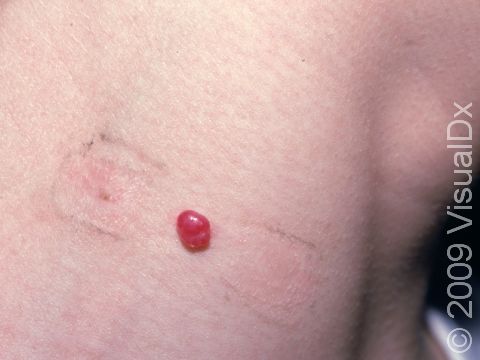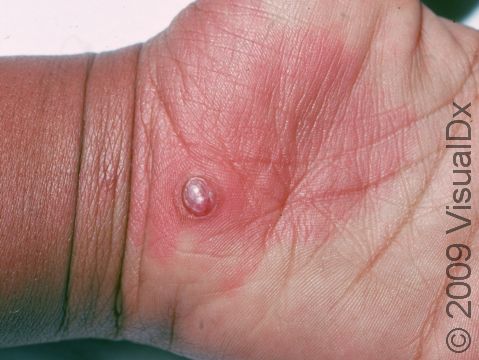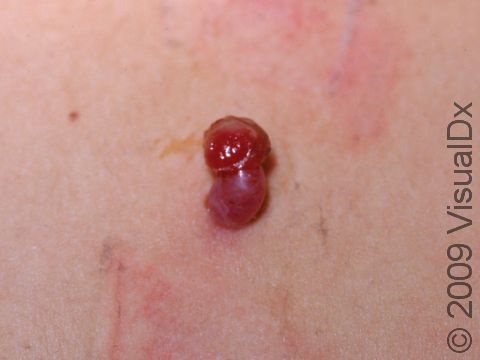Lobular Capillary Hemangioma (Pyogenic Granuloma)
Lobular capillary hemangiomas, also known as pyogenic granulomas, are common, harmless growths that can appear on the skin, the lips, or inside the mouth. They are composed of blood vessels and may occur at a location that has had a minor injury. They often grow rapidly, within weeks. They can bleed easily, especially if injured. Often there is just a single lesion, but sometimes there are multiple lobular capillary hemangiomas.
Who's At Risk?
Lobular capillary hemangiomas occur in people of all races / ethnicities. Although women are more frequently affected than men, male and female children are equally affected.
Lobular capillary hemangiomas are most often seen in:
- Children and young adults.
- Pregnant individuals.
- People taking certain medications, such as oral contraceptives, oral retinoids, and protease inhibitors.
- People undergoing chemotherapy.
Signs & Symptoms
Typically, a lobular capillary hemangioma appears as a bright red papule (small, solid bump) or nodule (solid, raised bump) that enlarges rapidly over a few weeks. Lobular capillary hemangiomas are usually 5-10 mm in diameter. They may bleed easily and can be tender. They may scab after bleeding. Rarely, more than one lobular capillary hemangioma may develop at the same time.
The most common locations for a lobular capillary hemangioma include the:
- Hands, fingers, and forearms.
- Head, face, and neck.
- Lips, gums, and inner mouth.
- Trunk.
Self-Care Guidelines
Any rapidly growing skin growth should be examined by a medical professional to confirm the diagnosis. Because lobular capillary hemangiomas can bleed easily, it may be helpful to cover the child’s lesion with a bandage until you see their medical professional.
Treatments
If the diagnosis of lobular capillary hemangioma is suspected, your child’s medical professional may perform a skin biopsy to confirm the diagnosis.
Lobular capillary hemangiomas may go away without treatment. Those that are associated with medications usually improve when the medicine is stopped or the dosage is lowered. Depending on the size of the lobular capillary hemangioma, location, and symptoms, the medical professional may decide that no treatment is necessary for children who can safely stop or lower the dose of the triggering medication.
But the lesions may be removed due to their tendency to bleed, become tender, and because of their distressing appearance.
Treatments include:
- Applying a chemical substance (silver nitrate) that will cause flattening of the lesion.
- Shave excision followed by electrocautery (burning with an electric needle).
- Freezing with liquid nitrogen (cryotherapy).
- Laser treatment.
Lobular capillary hemangiomas can come back after treatment. A lobular capillary hemangioma that comes back is best treated by surgical removal.
Visit Urgency
Make an appointment with your child’s medical professional, such as a dermatologist, if any rapidly growing or bleeding growth develops on your child’s skin or in the areas lining body cavities (mucous membranes), such as the mouth, nose, ears, eyes, or genitalia.
References
Bolognia J, Schaffer JV, Cerroni L. Dermatology. 4th ed. Philadelphia, PA: Elsevier; 2018.
James WD, Elston D, Treat JR, Rosenbach MA. Andrew’s Diseases of the Skin. 13th ed. Philadelphia, PA: Elsevier; 2019.
Kang S, Amagai M, Bruckner AL, et al. Fitzpatrick’s Dermatology. 9th ed. New York, NY: McGraw-Hill Education; 2019.
Paller A, Mancini A. Paller and Mancini: Hurwitz Clinical Pediatric Dermatology. 6th ed. St. Louis, MO: Elsevier; 2022.
Last modified on June 17th, 2024 at 2:58 pm

Not sure what to look for?
Try our new Rash and Skin Condition Finder
